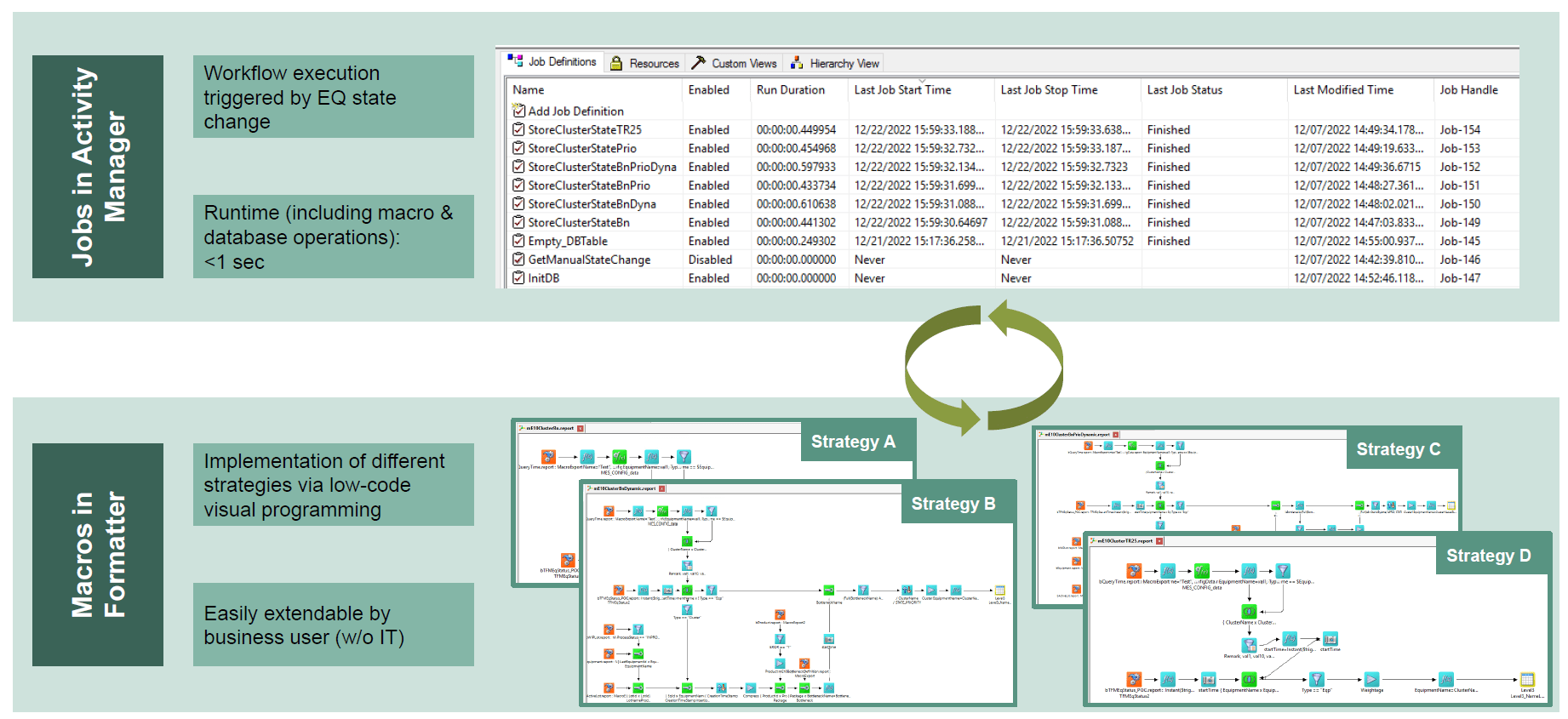The Challenge
Like many manufacturers in the semiconductor industry, Infineon used the Semi E10 Specification to define their equipment states and accurately measure variability. Tools without chambers and parallel clusters are well defined. But it wasn’t quite suitable for cluster tools with sequential processing, which called for more complex modeling. Therefore, Infineon set out to define a best practice method for defining the state of their sequential cluster tools. To test the viability, they selected a challenging cluster tool, which requires the product to run through multiple chambers in a specific order.
There was inconsistency in how different people defined the state of this machine. Take for example, a case in which the status indicators show three of the six chambers as working and three as idle. Some would consider the machine as 50 percent idle based on the number of chambers working at the time. However, others saw this as 100 percent operational as long as the internal bottleneck kept running. It was challenging to benchmark who was right and who was wrong in deciding the tool state, essentially to answer, ‘What is my real tool availability?’. An inability to benchmark performance has a direct impact on productivity because it leaves factories vague about what to fix or when to fix it. Tools that aren’t benchmarked would miss out on playing out to their full potential.
Infineon was looking to solve for how to calculate availability on sequential cluster tools, across different sites in the company, with one simple code. They decided to implement a number of different strategies and test them using Activity Manager. They used real time equipment states and process times along with other sources to gather the live transaction data from the tools for each cell in the cluster when they went up and down. They easily modeled each strategy using the click and drag interface of Activity Manager and those jobs were automatically run with an Activity Manager job, as shown in figure 1. This data was constantly collected, calculated, and stored in the Infineon database.
Because developing Activity Manager code doesn’t require in-depth expertise in programming, it allowed the subject matter experts to code the different logics themselves without a big IT project. The Infineon team was appropriately equipped to select the best model and easily extend the method across additional company sites. The entire process of testing, implementing, and extending the preferred model to other sites took a very short time, as opposed to the months it would have taken without Activity Manager.
Now, knowing the availability of their sequential cluster tools, Infineon can benchmark against other factories in their company and against the competition. This allows them to better plan moving forward because they know their true performance (and can use it to predict future performance). This ability to benchmark will also help them with capacity modeling, better allocation of resources, and will improve productivity.



